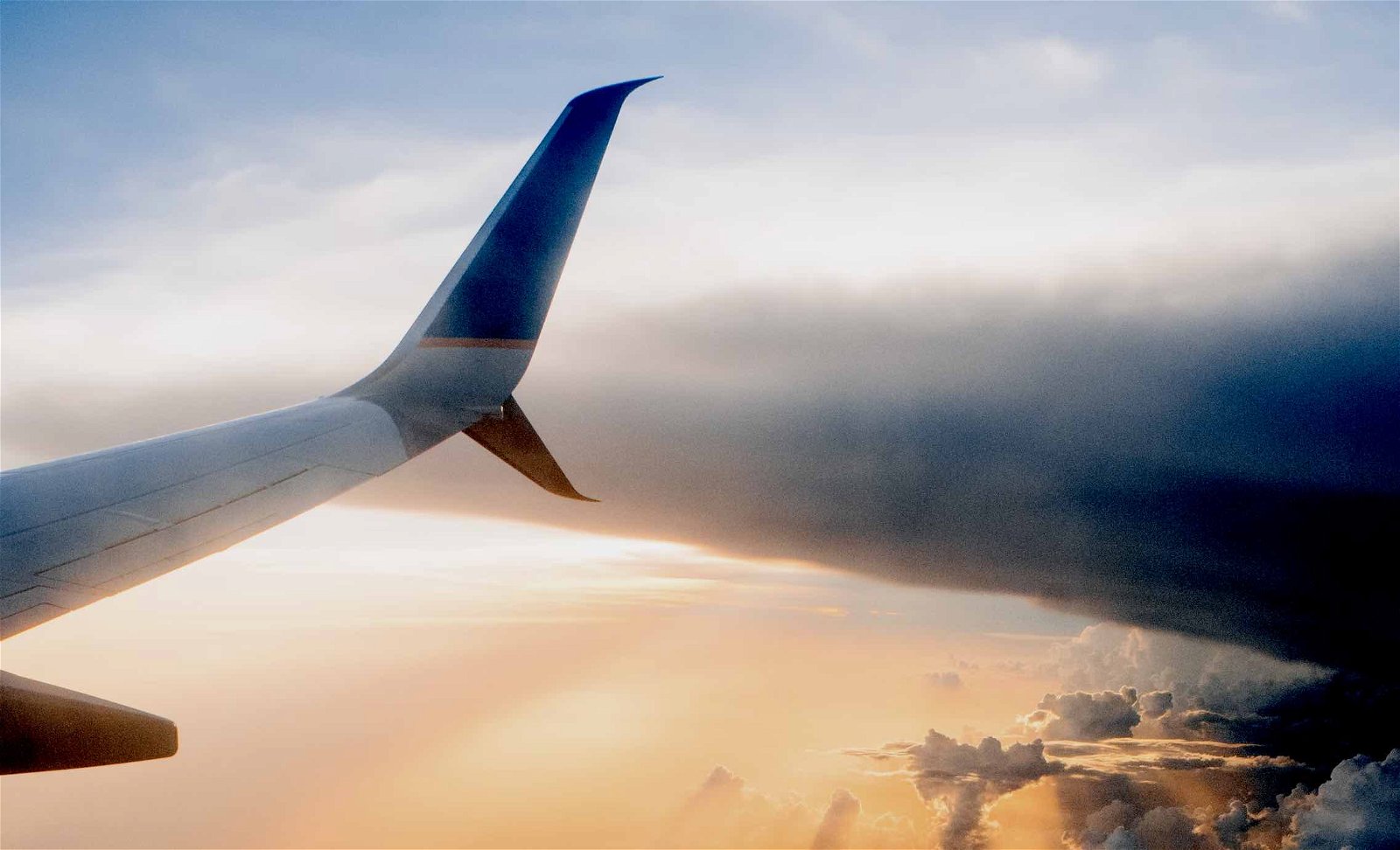Aviation safety and other potential concerns arising from the presence of unidentified anomalous phenomena (UAP) were among the issues addressed by Member of the European Parliament Francisco Guerreiro and others during a recent conference at the European Parliament.
The public meeting, which aimed to offer reliable information to policymakers, was held in March in cooperation with the UAP Coalition Netherlands. Several experts presented talks on various aspects of the UAP problem at the event, with a central focus on UAP as a potential threat to aviation safety.
Francisco Guerreiro, an independent Member of the European Parliament (MEP) representing Portugal, opened the event, which he said aimed to “start the debate inside the European Parliament on unidentified anomalous phenomena, which is a topic that is dear to thousands of Europeans,” as well as to “decrease the stigma associated with the topic inside important sectors of our society, such as civil aviation, the military, journalism, but also politics.”
Guerreiro said it is “essential that all the debates surrounding UAP are based on the scientific method and held in close cooperation with public institutions, academia, civil society, and all the professionals who are willing to open and voluntarily share their experiences.”
“Lastly, the path of the European Union in regard to UAPs must be made with transparency, data sharing, and accountability, so we don’t lose our credibility in a topic that is dear to many of our constituents and citizens,” Guerreiro said.
Guerreiro said the feedback he got from EU citizens and even outside European borders had been overwhelming, although his involvement in the UAP matter goes beyond hosting the conference. Last month, he asked questions to the European Commission – the executive branch of the E.U. – and gave speeches during the Plenary session of the European Parliament, proposing a modification to the E.U. Space law integrating UAP, and introduced a motion for resolution to the European Commission requesting the establishment of a harmonized E.U. reporting system.
Asked by The Debrief if he expected any resistance against such a resolution from other groups, Guerreiro said the topic “is not a priority for the rest of the MEPs and groups, so my action is individual.”
Asked about his level of confidence that it will be accepted, Guerreiro told The Debrief that he honestly doubted there would be much progress.
“The Individual Motions for Resolution mostly go to a specific committee, decided by the EP bureau, and then approved by the committee Chair and respective committee chairs from each political group. Since we´re ending the mandate (2019-2024), I doubt there will be any development on the matter. It will be upon the next mandate (2024-2029) to move forward on this topic,” Guerreiro said, noting that he does not plan to run for a second term.
The Debrief also asked Guerreiro about reports involving UAP seen in close proximity to aircraft, which are not made public by the European Union Aviation Safety Agency (EASA), partially to avoid hurting companies’ credibility and to prevent passengers’ concerns.
“I think the main focus should be on building a scientific and transparent report EU system that would encourage professionals but also companies and institutions to analyze with credibility the UAP subject,” Guerreiro told The Debrief. “This way, everyone would be included in the decrease of dogma surrounding the subject, and we could better understand the phenomena.”
UAP in the Netherlands
The first speaker at the event was André Jol with UAP Coalition Netherlands, an NGO dedicated to raising “awareness, promoting scientific research and building a bridge between the public and policymakers”.
After explaining that improvements in detection and surveillance allowed more evidence to be gathered regarding the existence of UAPs, he reminded the audience that the phenomenon is understood to have been observed at sea, and not only in the air, that pilots have reported near misses, and that military personnel have reported witnessing UAP near nuclear bases and power plants.
Jol explained that for someone to consider that UAP are hallucinations would mean that trained observers have been seeing “things which are a fantasy” for decades, while “we rely on the same professionals to be good observers in their professional capacities”. He then noted that NASA now has a director for UAP Research and has shown UAP footage of unidentified objects during last year’s conference.
“If a commercial pilot with passengers encounters a UAP, this could lead to confusion, distraction, and potentially even a risk of accidents. With 32,000 flights per day in the EU airspace, we feel it is necessary to address the topic. By understanding and addressing the UAP topic, we can enhance the safety and security of our skies.”
As Europe is home to one of the most crowded airspaces on Earth, UAP incursions could have a devastating effect on the aviation industry if the risk isn’t mitigated by authorities. In a climate of growing public distrust towards the reliability of commercial aircraft, as showcased by scandals in recent months regarding Boeing, the broader realization that our airspace is frequently violated by unregulated platforms, exotic or conventional, presents challenges for the aviation industry and lawmakers alike.
“In this era of heightened political, geopolitical tensions and rapid technological developments, the presence of unidentified objects in our airspace raises questions about surveillance, defense capabilities, and potential threats,” Jol also said, emphasizing the geopolitical and military risk of unmitigated UAP incursions. “We feel it’s imperative that these issues are explored and addressed.”
While addressing the geopolitical aspects of the phenomenon, Jol also spoke briefly about reports of Beijing’s engagement with issues related to UAP.
“It’s also interesting to note that China has issued a shoot-down order of UAP in at least one and possibly several provinces. They’re using AI to research UAP data, and they consider UAP to be a national threat and a flight safety issue. We also know that the Russian government is aware of it and doing research on this topic.”
Following a discussion of physical characteristics often attributed to UAP, Jol finished his talk by noting that despite decades of information gathered, witnesses are still faced with ridicule when reporting their sightings:
“We feel it’s crucial that policymakers do create an environment and the required legislative frameworks to allow witnesses to feel comfortable coming forward with their experiences and knowing that they will be heard, respected, and supported.”
As a solution, André Jol proposes to “raise awareness and educate policymakers, professional scientists, the media, and the public about the reality and the significance of UAP” to gain a better understanding of UAP through “leveraging expertise, technological research, resources, and international collaboration” in the hope of gaining “a deeper understanding of these phenomena.” Finally, he called for the establishment of protocols and procedures regarding UAP reporting and included UAP-related modifications to the E.U. regulations on aviation safety and Space Law.
Jol concluded his speech by calling EU stakeholders to assume their “responsibility to address this topic with seriousness, integrity and scientific rigor.”
Anomalies in European Airspace
Italian MUFON Chapter director Edoardo Russo followed, describing the European UFO/UAP investigation history from 1946 to today and the efforts that have been made by countless organizations to archive knowledge kept outside the Hall of Science by the stigma. Russo also discussed similar past unsuccessful initiatives in the European Union.
Dr. Beatriz Villaroel then took the stand, presenting her astronomy research into transient light phenomena and showing how some coincided with mass UAP sightings, giving the example of the Washington D.C. incursions in the summer of 1952. She listed the other scientific research into UAP and presented methods of searching for UAPs, in particular mysterious, unknown objects outside the Earth (ExoProbe). She then called for the establishment of an infrastructure that could support scientific research on UAP in the European Union.
Pilot Christiaan Van Heijst then spoke about the encounters he witnessed while flying civilian airplanes. He began by explaining that it was only after he heard testimonies from Ryan Graves and David Fravor, two NAVY pilots who have come forward in recent years regarding UAP incursion in sensitive areas of the United States, that he realized that what he saw could be more than what he originally thought. One could wonder how many pilots also dismiss what they see because they were never taught how to recognize physical UAP signatures.
“In the last 20 years of flying, I’ve seen a lot of interesting things,” Van Heijst said. “The most anomalous, taking place in the first few years of my flying career, always over Europe – which is important to note, because many people think that the UAP or UFO topic is from Hollywood, that it’s American.”
Executive director of American for Safe Aerospace Ryan Graves followed Van Heijst, noting that “Pilots are seeing UAP every day; we need to trust their expertise and support them coming forward.”
“Too often, pilots are afraid to share their stories due to stigma,” Graves said. “UAP are in global airspace, but they are grossly underreported. These sightings are not rare nor isolated. They are routine.”
Graves emphasized that “military aircrews and commercial pilots, trained observers whose lives depend on accurate identification, are frequently witnessing these phenomena but are either unable or unsure how to report UAP officially.”
As a solution, he pointed out the government’s role in destigmatizing UAP by supporting witness reporting and investigation.
“Government plays an important role to destigmatize UAP and to investigate the phenomenon. The stigma attached to UAP is real and powerful. It silences commercial pilots who fear professional repercussions and discourages military witnesses from sharing their reports. Governments can help by taking reports seriously and creating mechanisms to collect UAP data and investigate and evaluate it.”
Graves concluded his speech by stating that the U.S. military realized that it has an awareness gap on UAP, and called for the pursuit and evaluation of data to counter the skepticism regarding UAP.
When The Debrief asked Graves about his feelings regarding the AARO historical report, also published in March, and its reception in the media, Graves expressed frustration.
“Generally speaking, no, I’m not satisfied with the historical report,” Graves said.
“I won’t pretend to be a historian of the UAP topic going back to the 40s or earlier. However, one thing that was clear is that the language and the dismissal that was inherent within that report did not align with the joint chiefs of staff recommendations for reporting UAPs that went out to all service branches,” Graves said. “And in that reporting, they were very clear that this was a serious issue that was occurring internationally as well as domestically and was a concern, both for aviation safety and for our domain awareness.”
During a Q&A at the end of the conference, José-Luis Penedo Del Rio, the Chief of Political Affairs of the European Aviation Safety Agency (EASA), noted that a system to report sightings by professionals existed already available through the EASA website. He added that it could be improved, but it was available freely, not specifically for UAP.
Van Heijst replied that if he filed a UAP report to his company regarding a sighting, the company itself couldn’t do anything.
Guerreiro then intervened, explaining that his proposal aimed to change this specific EASA system so that observation reports could be recorded even if the situation did not endanger the safety of the flight.
Guerreiro concluded the conference by emphasizing the need for political leadership in the European Union on the UAP issue, expressing his hopes that lawmakers will “move ahead and also surpass the U.S. on this topic.”
“Then we all—united—can have a very scientific approach on this topic.”
Baptiste Friscourt is a certified visual arts instructor based in France. You can follow his work online via Sentinel News on Substack.

